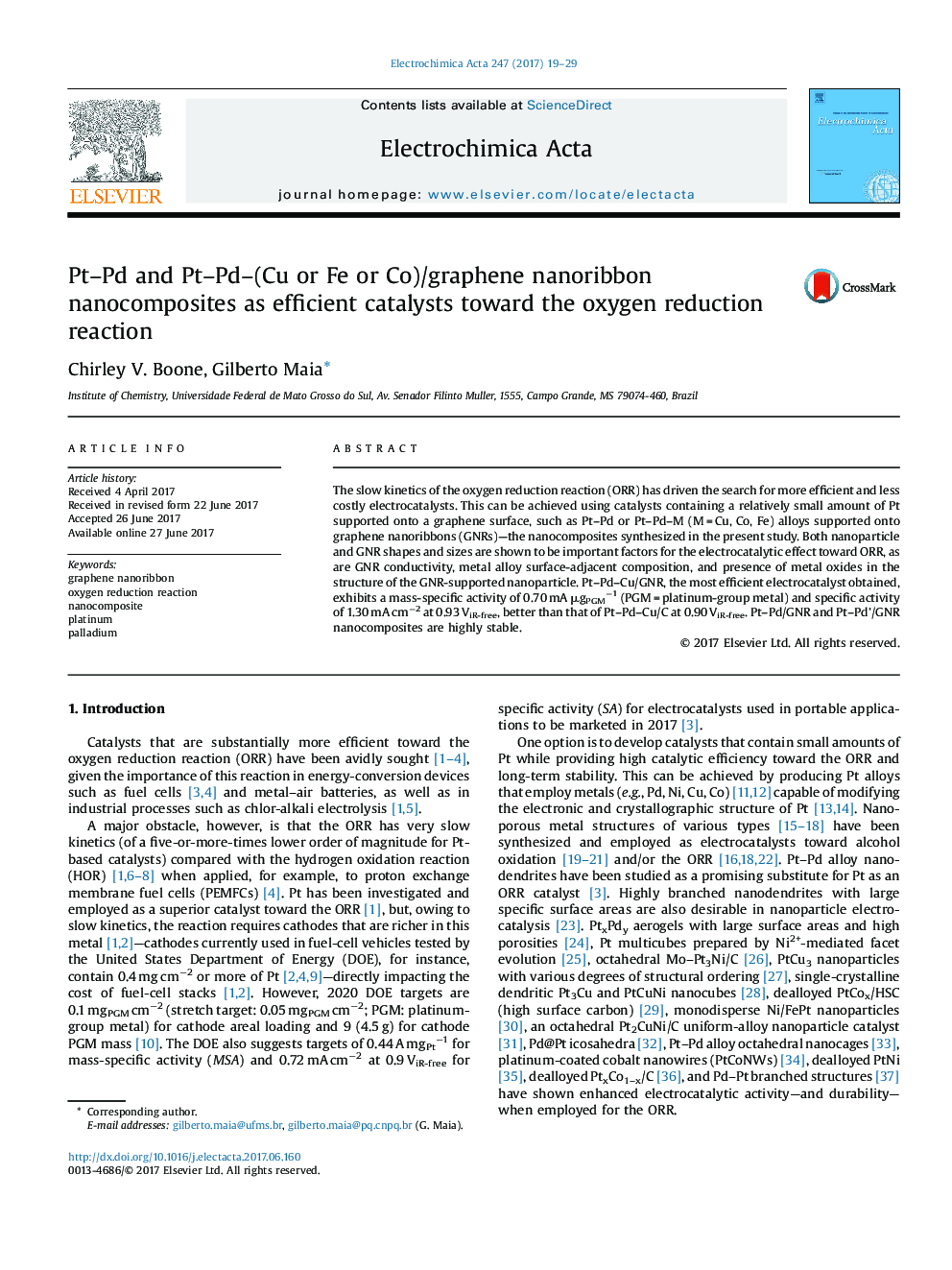| Article ID | Journal | Published Year | Pages | File Type |
|---|---|---|---|---|
| 6470909 | Electrochimica Acta | 2017 | 11 Pages |
â¢GNR-supported porous, dendritic, cubic metal-alloy nanocrystals were produced.â¢The nanocrystals exhibited an fcc crystalline pattern.â¢Pt-Pd-Cu/GNR showed high catalytic activity toward the ORR.â¢Pt-Pd/GNR and Pt-Pd'/GNR exhibited good stability toward the ORR.
The slow kinetics of the oxygen reduction reaction (ORR) has driven the search for more efficient and less costly electrocatalysts. This can be achieved using catalysts containing a relatively small amount of Pt supported onto a graphene surface, such as Pt-Pd or Pt-Pd-M (M = Cu, Co, Fe) alloys supported onto graphene nanoribbons (GNRs)-the nanocomposites synthesized in the present study. Both nanoparticle and GNR shapes and sizes are shown to be important factors for the electrocatalytic effect toward ORR, as are GNR conductivity, metal alloy surface-adjacent composition, and presence of metal oxides in the structure of the GNR-supported nanoparticle. Pt-Pd-Cu/GNR, the most efficient electrocatalyst obtained, exhibits a mass-specific activity of 0.70 mA μgPGMâ1 (PGM = platinum-group metal) and specific activity of 1.30 mA cmâ2 at 0.93 ViR-free, better than that of Pt-Pd-Cu/C at 0.90 ViR-free. Pt-Pd/GNR and Pt-Pd'/GNR nanocomposites are highly stable.
Graphical abstractDownload high-res image (179KB)Download full-size image
